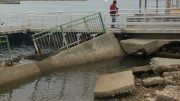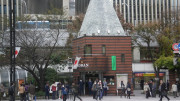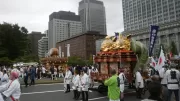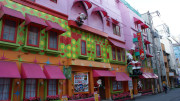Japan’s currency is called the yen (JPY). Exchange rates fluctuate, but as a rough guide, 100 yen is approximately equal to $1.20 USD, $1.20 AUD, or about 1 euro.

The currency consists of both coins and banknotes. The most common banknotes start at 1,000 yen (roughly $10), followed by 5,000, and 10,000 yen notes. A useful way to estimate values is to place a decimal point before the last two digits, making Japanese yen amounts comparable to US or Australian dollars—for example, 1,000 yen would be approximately 10.00.
Japanese banknotes, like US currency, have a similar overall design, with a bluish tint accented by other colours. The notes have been redesigned and updated several times in recent years to incorporate enhanced security features, making counterfeiting more difficult.
Banknotes
- The 1,000-yen note features Hideyo Noguchi, a prominent Japanese bacteriologist known for discovering the agent of syphilis in 1911, on the front. The reverse side depicts Mt. Fuji, Lake Motosuko, and cherry blossoms. The note has a bluish tint.
- The 5,000-yen note has a purplish hue and features Higuchi Ichiyo, a Japanese author of samurai lineage, on the front. The reverse side showcases Kakitsubata-zu, a painting of irises by Ogata Kōrin.
- The 10,000-yen note depicts Fukuzawa Yukichi, a renowned author, educator, translator, entrepreneur, and political theorist who founded Keio University. The reverse features the Hōō (Phoenix) statue from Byōdō-in Temple. This note has a brownish tint.
Also note that there is a 2000-yen note that was introduced in the year 2000 to commemorate the 26th G8 Summit. This note has yet to gain widespread adoption and is rarely used. While the 2000 yen note remains legal tender, its rarity means that both locals and visitors seldom encounter it in daily transactions.
Coins
Japan’s coins come in denominations of 1, 5, 10, 50, 100, and 500 yen. Due to their low individual value, it’s common to accumulate a significant number of these coins, which can be cumbersome to carry around.
- 1 yen: Made of lightweight aluminum, this silver-colored coin is the smallest denomination.
- 5 yen: A brass coin with a distinctive hole in the center, often considered lucky due to its pronunciation “go-en,” which also means “good fortune” or “relationship” in Japanese.
- 10 yen: A bronze coin without a hole, featuring the Phoenix Hall of Byōdō-in Temple on its design.
- 50 yen: A cupronickel coin with a central hole, adorned with a chrysanthemum design.
- 100 yen: A cupronickel coin without a hole, depicting cherry blossoms.
- 500 yen: A nickel-brass coin, currently one of the highest-valued coins in the world, featuring paulownia flowers.
Also on Happy Jappy
ATMs and Credit Cards




